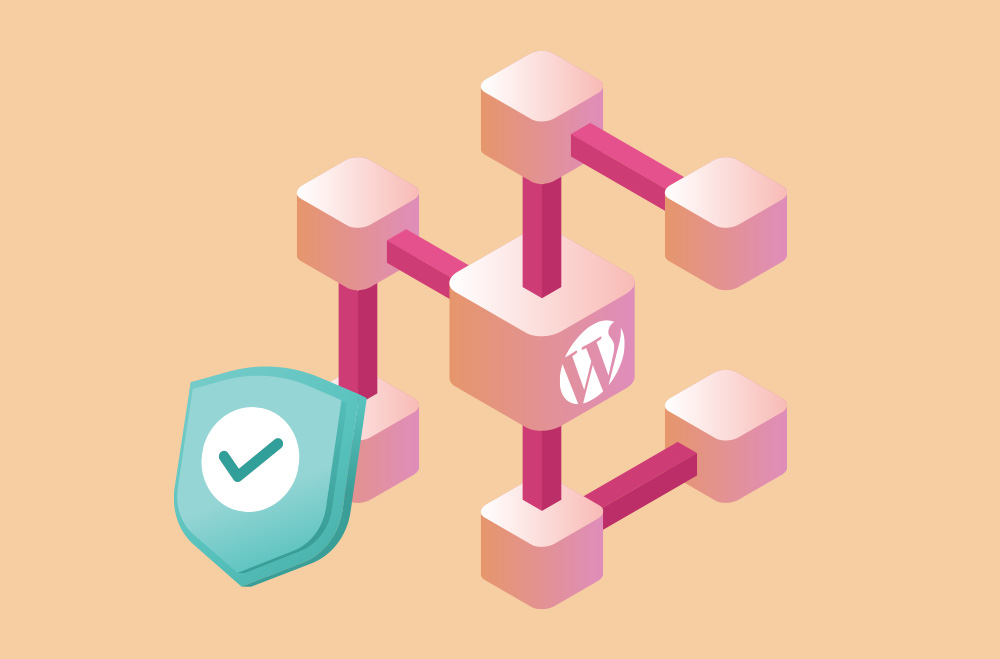
En 2025, les visiteurs de sites web exigent des expériences numériques fluides et ultra-rapides, où qu'ils se trouvent. Pour répondre à ces attentes, les propriétaires de sites web se tournent vers l'edge computing, une technologie révolutionnaire qui rapproche les données et le contenu des sites web de l'utilisateur final. Au lieu de s'appuyer uniquement sur des serveurs centralisés, l'edge computing distribue le contenu sur plusieurs sites dans le monde. Cela minimise la latence, accélère les temps de chargement des pages et améliore considérablement l'expérience de navigation, notamment pour les utilisateurs mobiles et internationaux.
Pour les propriétaires de sites WordPress, l'edge computing n'est pas seulement un gain de performances ; c'est un avantage stratégique. En traitant les données en périphérie du réseau, les sites web gagnent en résilience face aux pics de trafic et aux cybermenaces. Il améliore également le référencement et l'engagement des utilisateurs en réduisant les taux de rebond. Face à la concurrence croissante des entreprises sur le marché mondial, l'adoption de l'edge computing garantit la rapidité, la sécurité et la fiabilité de votre site WordPress, répondant ainsi aux exigences croissantes d'un public tourné vers le numérique et positionnant votre marque en tête.
Le graphique présente trois tendances clés de l'edge computing de 2022 à 2025 :
L'edge computing est un modèle informatique moderne qui déplace le traitement des données des serveurs centralisés vers le lieu physique où elles sont générées, comme les appareils des utilisateurs ou les serveurs périphériques à proximité. Contrairement aux systèmes traditionnels qui dépendent fortement de centres de données distants, l'edge computing permet aux appareils de traiter les calculs localement, réduisant ainsi le besoin de communication longue distance entre les clients et les serveurs.
Cette approche décentralisée réduit considérablement la latence et augmente la réactivité, notamment pour les applications en temps réel comme la diffusion de contenu et l'interaction utilisateur sur les sites WordPress. Grâce à l'edge computing, les sites web peuvent offrir des temps de chargement plus rapides, une meilleure fiabilité et une expérience utilisateur plus fluide, notamment dans les régions éloignées des principaux serveurs. Face à la demande croissante de rapidité et d'efficacité en 2025, l'edge computing est devenu une stratégie cruciale pour optimiser les performances et prendre en charge des environnements WordPress évolutifs et à fort trafic.
Le cloud computing traditionnel repose sur des centres de données centralisés, souvent situés loin des utilisateurs finaux. Lorsque les utilisateurs accèdent à un site web, leurs requêtes transitent par ces serveurs distants, ce qui entraîne des retards, surtout si les serveurs sont situés sur un autre continent. Ce modèle, bien qu'évolutif et rentable, peut engendrer des goulots d'étranglement des performances et des problèmes de latence qui nuisent à l'expérience utilisateur, notamment pour les utilisateurs WordPress internationaux.
L'edge computing répond à ces défis en rapprochant le calcul et le stockage des données de l'utilisateur final, souvent à la source des données ou à proximité. Au lieu d'acheminer toutes les requêtes via un serveur central distant, des périphériques ou des centres de données locaux gèrent le traitement. Cette décentralisation minimise la distance à parcourir pour les données, ce qui permet des temps de réponse plus rapides et allège la charge sur l'infrastructure principale. Ainsi, les sites web utilisant l'edge computing peuvent diffuser du contenu de manière plus rapide, plus fiable et plus sécurisée.
Principales différences entre le cloud computing Edge et le cloud computing traditionnel :
Pour les sites web WordPress, maintenir des performances élevées et garantir une expérience utilisateur fluide est essentiel pour fidéliser les visiteurs et améliorer le référencement. L'edge computing répond à ces objectifs en permettant un traitement des données au plus près des utilisateurs, réduisant ainsi considérablement les délais liés à la distance des serveurs. Ceci est particulièrement important pour les sites internationaux qui desservent des utilisateurs répartis dans plusieurs régions, où l'hébergement centralisé traditionnel peut avoir du mal à diffuser du contenu avec une vitesse et une fiabilité constantes.
En exploitant les serveurs périphériques et la gestion localisée des données, les sites web WordPress bénéficient d'une meilleure disponibilité, de temps de réponse plus rapides et d'une répartition de charge plus efficace. Ces améliorations optimisent non seulement l'expérience utilisateur, mais réduisent également la charge sur les serveurs centraux, permettant une évolutivité plus fluide lors des pics de trafic. De plus, le traitement local des données sensibles minimise le risque d'exposition lors de leur transmission, renforçant ainsi la sécurité des opérations WordPress.
Avantages de l'Edge Computing pour WordPress :
L'edge computing transforme la diffusion de contenu dans WordPress en réduisant la distance physique entre la source et l'utilisateur final. Au lieu d'acheminer les requêtes via des serveurs centralisés, les serveurs edge sont placés à des emplacements stratégiques dans le monde, mis en cache et diffusent du contenu statique et dynamique. Cela réduit considérablement la latence, ce qui accélère le chargement des pages et fluidifie la navigation, facteurs clés pour améliorer l'engagement utilisateur, le référencement et les taux de conversion.
Outre les gains de performances, l'edge computing allège également la charge du serveur en répartissant la charge de trafic sur plusieurs nœuds. Cela favorise non seulement l'évolutivité, mais permet également d'éviter les interruptions de service pendant les pics de trafic. Ainsi, les sites web WordPress optimisés par l'edge computing peuvent garantir une diffusion homogène, même en cas de forte demande, ce qui les rend plus résilients et réactifs.
Principales améliorations grâce à l'informatique de pointe :
L'edge computing améliore la sécurité de WordPress en minimisant la transmission de données sensibles sur de longues distances. Le traitement local des informations au niveau des nœuds périphériques réduit considérablement le risque d'interception, d'attaques de l'homme du milieu et d'exposition pendant le transit. L'edge computing constitue ainsi un puissant mécanisme de défense, notamment pour les sites gérant les identifiants des utilisateurs, les informations de paiement ou les informations personnelles.
Cependant, la décentralisation du traitement des données pose également de nouveaux défis en matière de sécurité. Avec l'utilisation de plusieurs nœuds périphériques, la surface d'attaque s'élargit, ce qui signifie que chaque nœud doit être sécurisé et surveillé individuellement. De plus, la synchronisation des données sur les serveurs distribués devient plus difficile, ce qui augmente le risque d'incohérences ou de corruption des données sans protection adéquate.
Considérations clés en matière de sécurité :
Si l'edge computing offre des avantages impressionnants, son intégration à un environnement WordPress peut s'avérer complexe et gourmande en ressources. Elle nécessite de repenser les architectures d'hébergement traditionnelles et de s'adapter à un réseau distribué de nœuds périphériques. Pour de nombreux développeurs, cette transition peut impliquer une courbe d'apprentissage abrupte, notamment pour gérer plusieurs points de diffusion de contenu et garantir une synchronisation précise des données sur tous les nœuds.
Outre les obstacles techniques, le coût et la compatibilité constituent des préoccupations majeures. Les petites entreprises peuvent avoir des difficultés à gérer l'investissement financier nécessaire au déploiement et à la maintenance d'une infrastructure Edge. De plus, tous les plugins, thèmes ou configurations de serveur ne sont pas conçus pour prendre en charge les environnements Edge dès leur installation, ce qui nécessite des intégrations ou des mises à jour personnalisées pour garantir une compatibilité totale avec les solutions Edge.
Les principaux défis comprennent :
Pour exploiter pleinement les avantages de l'edge computing, les développeurs WordPress doivent adopter des stratégies axées sur les performances, compatibles avec une infrastructure distribuée. Cela implique de repenser la gestion des ressources, le rendu des pages et la mise en cache des données sur plusieurs sites. En préparant proactivement leurs sites web aux environnements edge, les développeurs peuvent réduire la charge des serveurs, améliorer les temps de réponse et offrir des expériences plus cohérentes à un public mondial.
L'intégration d'outils et de pratiques de codage optimisés pour l'edge computing peut considérablement améliorer l'efficacité. Les développeurs doivent choisir des hébergeurs et des plugins prenant en charge l'intégration CDN et la mise en cache dynamique. De plus, minimiser la dépendance au rendu côté serveur et transférer les tâches répétitives vers l'edge computing peut réduire considérablement la latence et la consommation de ressources. Grâce à une planification minutieuse, les développeurs WordPress peuvent garantir l'agilité, la rapidité et la disponibilité de leurs sites web pour une diffusion en edge computing.
Bonnes pratiques pour optimiser WordPress pour l'Edge Computing :
Face à la demande croissante de sites web plus rapides, plus intelligents et plus sécurisés, l'edge computing deviendra un élément fondamental du développement WordPress moderne. Au-delà de la simple diffusion de contenu, les futures fonctionnalités edge incluront le traitement intelligent des données, l'analyse en temps réel et la personnalisation par IA, le tout au plus près de l'utilisateur. Les sites WordPress offriront ainsi des expériences ultra-personnalisées et performantes, tout en réduisant la charge du back-end et la complexité de l'infrastructure.
De plus, l'edge computing devrait devenir un pôle d'innovation. Les développeurs exploiteront les fonctions edge sans serveur pour exécuter une logique légère sans gérer de piles de serveurs complètes, améliorant ainsi la flexibilité et réduisant les coûts opérationnels. Les architectures edge-first bénéficieront également de l'optimisation des performances mobiles, du respect de la confidentialité des données et des flux de publication décentralisés. À mesure que les hébergeurs développeront leurs offres edge, les utilisateurs de WordPress auront accès à des solutions évolutives, rapides, sécurisées et prêtes pour l'avenir du web.
Tendances émergentes en matière d'informatique de pointe pour WordPress :
L'edge computing n'est pas une simple tendance passagère ; c'est une transformation fondamentale dans la façon dont les sites web modernes sont créés, diffusés et utilisés. Pour les propriétaires de sites WordPress, l'adoption de technologies d'edge computing peut entraîner des améliorations mesurables en termes de vitesse, de fiabilité et d'évolutivité. En rapprochant le traitement des données des utilisateurs, vous réduisez la latence, optimisez la réactivité en temps réel et améliorez l'expérience numérique globale, notamment pour les audiences internationales ou les trafics mobiles importants. Le résultat ? Des utilisateurs plus satisfaits, un engagement accru et de meilleures performances SEO.
Alors que le Web devient de plus en plus décentralisé et que les attentes des utilisateurs continuent d’augmenter, il est essentiel de s’associer à un fournisseur d’hébergement qui comprend l’innovation de pointe. Bright Hosting propose des services d'hébergement WordPress optimisés pour les performances, conçus pour les applications Edge. Que vous cherchiez à accélérer votre boutique WooCommerce, à diffuser du contenu dynamique sur plusieurs continents ou à sécuriser vos données grâce à un traitement localisé, Bright Hosting vous offre l'infrastructure et le support nécessaires pour assurer la réussite de votre site web en 2025 et au-delà.





